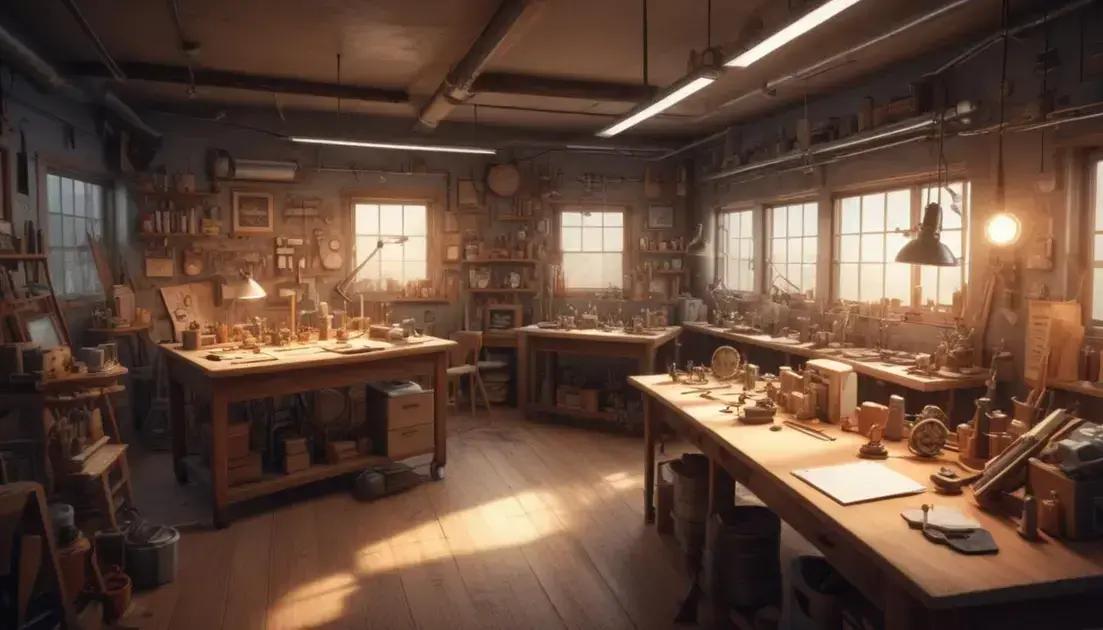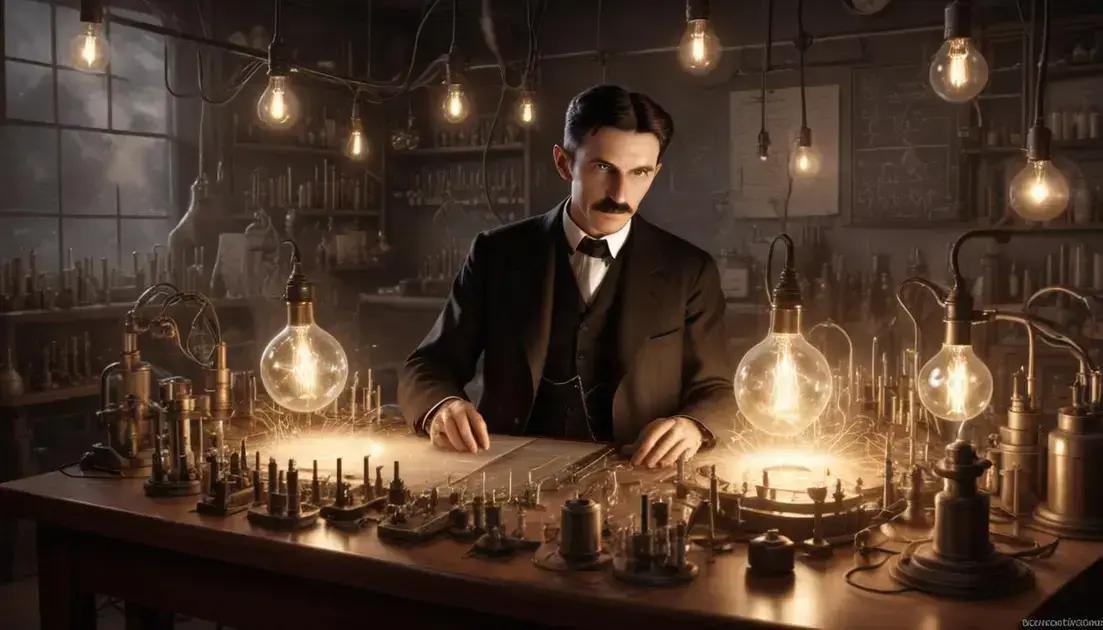
Edison and Electric Light: Darkness Defeated
The advent of electric light revolutionized urban life by transforming how people interacted after dark. It enabled factories to operate longer, creating new jobs and boosting productivity. Social gatherings flourished as families enjoyed evenings together, while entertainment options expanded significantly. Edison’s innovations, including the practical light bulb and electrical systems, played a crucial role in this cultural shift. Despite challenges like high costs and safety concerns, electric lighting fundamentally changed society and paved the way for modern living.
Electricity has transformed our world, illuminating cities and extending our days far beyond sunset. How did a simple spark reshape lives and industries? Let’s dive in!
The Advent of Electric Lighting
The advent of electric lighting changed everything. Before electricity, cities relied on gas lamps and candles. These lights were dim and often flickered. With electricity, lights became brighter and more reliable. Imagine walking through a city at night, and every street is lit up!
How Electric Lighting Came to Be
In the late 1800s, Thomas Edison played a key role in developing electric light. He created the first practical light bulb that lasted longer than any before it. This breakthrough meant homes and streets could finally shine brightly after dark.
The Impact on Daily Life
With electric lighting, people could do more at night. Work hours expanded, allowing factories to operate longer. Shops stayed open later, making it easier for people to shop and socialize. Life became more vibrant, and night was no longer a barrier.
Transforming Cities
Electric lighting made cities feel safer and friendlier. Public spaces became gathering spots. Families could enjoy the parks and streets after sunset. This lighting changed how neighborhoods developed, leading to a new urban landscape.
A New Era of Entertainment
Electricity brought a boom in entertainment too! Theaters, cinemas, and dance halls lit up, attracting crowds. Events could run late into the night, turning cities into lively places vibrating with excitement.
This shift wasn’t just about lights; it signaled a change in lifestyle. Electric lighting opened doors for innovation, creativity, and socializing in ways people never imagined.
Impact on Industry and Urban Life
The impact of electric lighting on industry and urban life was huge. Factories could now run at night, increasing production. Workers found new jobs and had more hours to make money. This change added energy to the economy.
Boosting Factory Productivity
Before electric light, factories had to stop working when it got dark. With electric lights, they could keep going. This meant more products could be made. Workers felt that electric light improved their lives, giving them more chances to earn.
Transforming Urban Spaces
Electric light made cities come alive at night. Streets shone brightly, making them safer for people. More businesses opened late, which created a lively atmosphere. Cafes and theaters started to thrive after dark.
Changing Social Interactions
Social life changed too. People began to meet friends in the evenings. Electric lighting allowed families to gather after dinner. This shift helped build stronger community ties and made neighborhoods feel more connected.
Innovations in Urban Planning
With cities growing, urban planners had to adjust. They designed streets and public spaces with electric lighting in mind. This planning made sure that lighting was available everywhere. Parks, squares, and public buildings all needed good lighting.
Overall, electric lighting sparked a wave of change. It didn’t just brighten streets; it transformed how cities functioned and how people lived their daily lives.
Edison’s Innovations
Edison’s innovations in electric lighting changed the world. His most famous creation is the light bulb. It offered a bright and long-lasting solution to darkness. Before Edison, light bulbs didn’t last long or worked very poorly.
Creating the First Practical Light Bulb
Edison worked tirelessly to make the light bulb work efficiently. He tested over 6,000 materials for the filament. Finally, he settled on carbonized bamboo, which worked well and lasted longer. This success made electric light suitable for everyone.
The Invention of the Electrical System
Beyond the light bulb, Edison also created an entire electrical system. This system included generators, wiring, and safety devices. It enabled homes and businesses to get electric power easily. His ideas paved the way for modern wiring systems.
Building Power Stations
Edison built the first commercial power station in New York City in 1882. This station supplied electricity to many homes and businesses. It made electric power popular and reliable. People began to see the many benefits of electric lighting.
Innovations that Changed Lives
Edison’s inventions didn’t just stop at lights. He also created the first electric meter to measure electricity use. This made it easier for companies to charge customers fairly. Edison’s work helped cities grow and thrive.
Thanks to Edison’s innovations, the world became a brighter place. His legacy continues today in every light bulb we use.
Challenges in the Spread of Electricity
The spread of electricity faced many challenges. One major issue was the cost. Installing electric systems was expensive, and not everyone could afford it. Many homes had to rely on gas lamps and candles for light.
Safety Concerns
Safety was another big worry. Early electrical systems had risks. There were fire hazards and issues with overloading circuits. People needed to trust electric light before fully accepting it.
Lack of Infrastructure
In many areas, the infrastructure wasn’t ready. There were not enough power lines or generators. This made it hard for electricity to reach rural areas. Those living outside cities waited much longer for power.
Changing Mindsets
Changing people’s mindsets also took time. Many people were used to traditional lighting. They were hesitant to switch to something new and unfamiliar. Edison’s demonstrations helped show the benefits of electric light.
Regulatory Hurdles
Regulatory issues slowed down progress. Rules varied from place to place. Many towns had to create new laws to manage the electricity systems. This added more delays to the spread of electricity.
Despite these challenges, the push for electricity continued. Overcoming these issues was vital for the growth of electric light and modern living.
The Cultural Shift After Electric Light
The introduction of electric light brought major cultural changes. It transformed how people lived and interacted with each other. Nighttime was no longer just for sleeping.
New Leisure Activities
With electric light, people began to enjoy new evening activities. They visited theaters, restaurants, and dance halls. Entertainment options expanded, making cities more vibrant at night.
Increased Social Gatherings
Families and friends gathered after dark with more safety and comfort. Electric lights illuminated homes and streets. This encouraged evening social events like dinner parties and neighborhood gatherings.
Impact on Work and Industry
The work schedule also changed. More people began working evening shifts. Factories and shops hired more workers for night operations. This increased job opportunities and reshaped daily routines.
Influence on Arts and Literature
Cultural expression evolved, too. Artists began to explore night scenes in their work. Writers penned stories that captured the lively atmosphere of electric-lit streets. This creativity marked a new era in art and literature.
Overall, electric light didn’t just brighten the night; it changed how people lived their lives and interacted with one another.
Conclusion
In conclusion, the introduction of electric light changed our world in many ways. It enhanced safety, created new jobs, and sparked exciting social activities. Cities became alive at night, transforming how people interacted and spent their time.
Electric lighting not only brightened streets but also opened doors for creativity and expression in art and culture. This innovation paved the way for modern living, showing us the true power of light.
As we look back, it’s clear that electric light was more than just a convenience; it revolutionized daily life and reshaped the very fabric of society.


